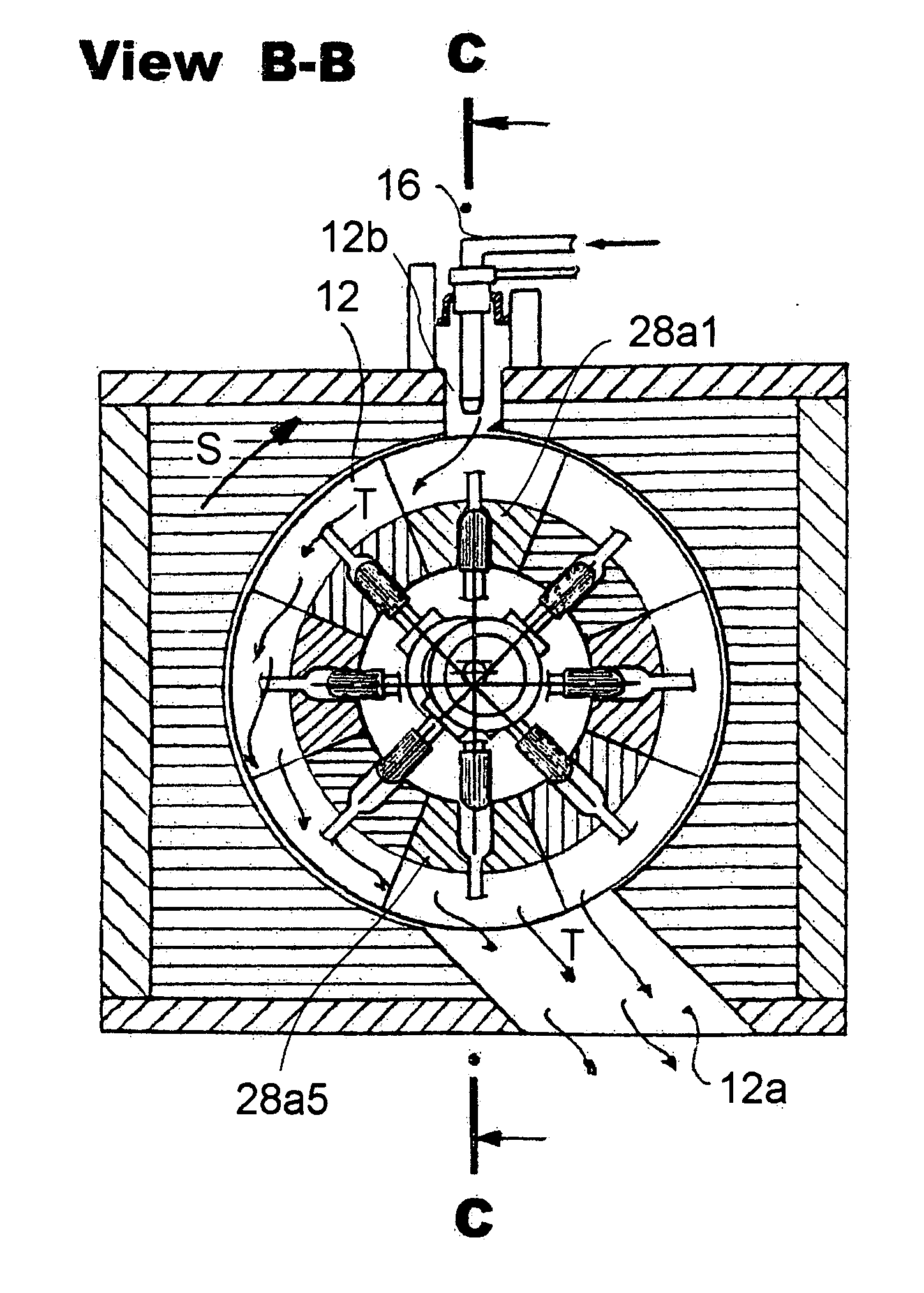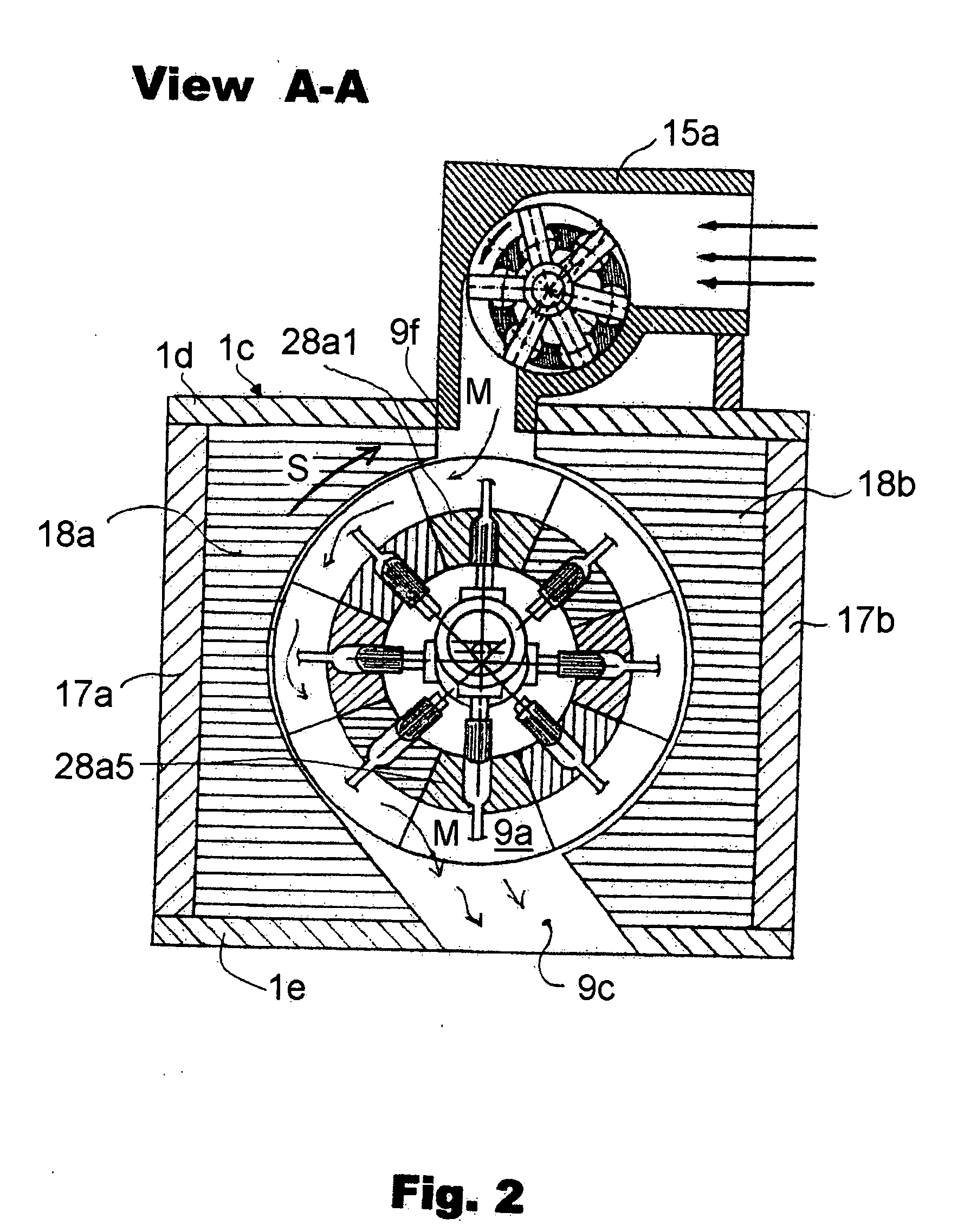Stirling Thermodynamic cycle rotary thermal machine
a rotary thermal machine and thermodynamic cycle technology, applied in the direction of rotary piston engines, rotary or oscillating piston engines, liquid fuel engines, etc., can solve the problems of reducing the efficiency and output of the torque, the inability to remove the excess heat from the vicinity, and the implementation of the torque withdrawal, so as to reduce the heating and cooling space, the effect of rapid heat exchange and volume reduction
- Summary
- Abstract
- Description
- Claims
- Application Information
AI Technical Summary
Benefits of technology
Problems solved by technology
Method used
Image
Examples
Embodiment Construction
[0038]Referring now to the drawing in detail, and first to FIG. 1 thereof, it may be seen that the reference numeral 1 has been used therein to identify a stator housing of the machine embodying the present invention. A rotor including a multitude of parts to be discussed in detail below is accommodated in the interior of the stator housing 1. The stator housing 1 consists, in general, of two load-bearing end walls 1a and 1b that are spaced from one another in an axial direction of the machine, and a circumferential wall identified in its entirety by the reference numeral 1c and extending between and rigidly connected with the end walls 1a and 1b.
[0039]An eccentric shaft 4 is supported in the end walls 1a and 1b by respective bearings 41a and 41b. The eccentric shaft 4 is shown to pass through a respective passage in each of the end walls 1a and 1b. The eccentric shaft 4 also passes at its axial end close to the end wall 1a through an opening 47a provided in a first entraining ring...
PUM
 Login to View More
Login to View More Abstract
Description
Claims
Application Information
 Login to View More
Login to View More - R&D
- Intellectual Property
- Life Sciences
- Materials
- Tech Scout
- Unparalleled Data Quality
- Higher Quality Content
- 60% Fewer Hallucinations
Browse by: Latest US Patents, China's latest patents, Technical Efficacy Thesaurus, Application Domain, Technology Topic, Popular Technical Reports.
© 2025 PatSnap. All rights reserved.Legal|Privacy policy|Modern Slavery Act Transparency Statement|Sitemap|About US| Contact US: help@patsnap.com



